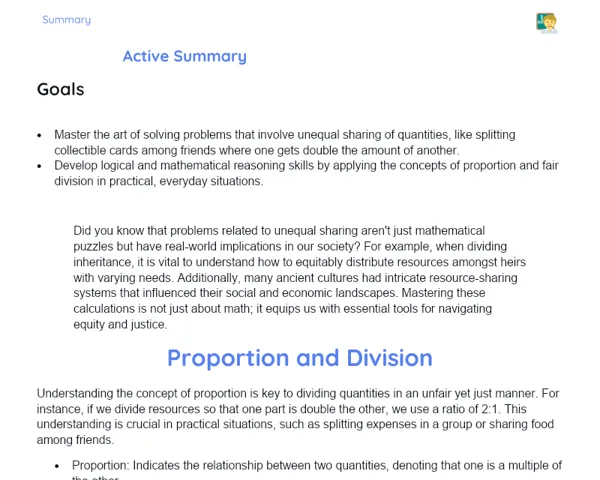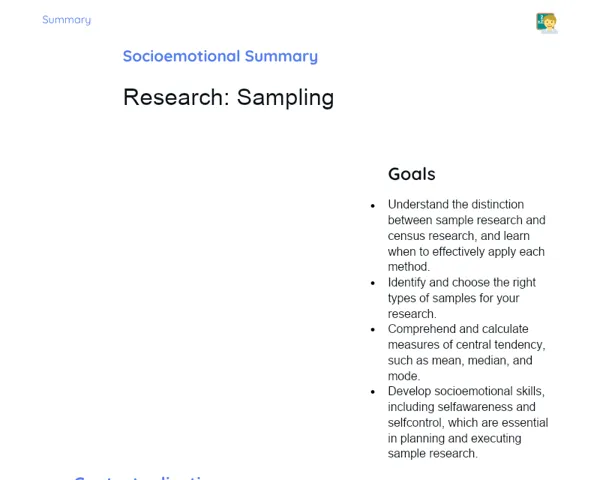Summary Tradisional | Data Reading and Interpretation
Contextualization
In our everyday life, we come across various kinds of data. Data are bits of information that can be gathered, organised, and analysed to help us make informed decisions. For instance, when we visit a local supermarket, we often compare prices across different brands to choose the best offer. Similarly, when watching the news, we might see tables displaying weather forecasts or survey results. Presenting data in such an organised manner makes it easier for us to understand the context.
Tables are one of the most common methods to neatly present data using rows and columns. Since time immemorial, tables have been used to record and monitor important details. Even today, they prove indispensable in numerous fields such as medicine, economics, and sports – whether it’s keeping patient records, studying market trends, or tracking the performance of teams and players.
To Remember!
What are data tables?
Data tables are formats that arrange information into rows and columns, making it easier to visualise and compare data. Each row typically represents a record or an instance, while each column denotes a specific attribute or variable. This systematic organisation allows us to present large amounts of data in a clear and accessible manner.
In academic settings, for example, tables are used to showcase experiment results, student marks, and attendance records. In our daily routine, we often encounter tables in cookery recipes, financial spreadsheets, and even weather bulletins.
The chief advantage of tables is that they simplify complex information, enabling quick analysis and interpretation which, in turn, aids decision-making.
-
Tables arrange data into rows and columns.
-
Each row represents a record, while each column details a specific characteristic.
-
They are used across various fields to present information clearly.
Components of a table
A table consists of several key elements that contribute to its clear presentation of data. The title is vital as it briefly describes the subject or content of the table, allowing readers to quickly grasp its purpose.
The header is the top row that contains the labels for each column. These labels indicate the variables or categories of the data. For example, in a table showing fruit sales, you might find column labels such as ‘Fruit’, ‘Quantity Sold’, and ‘Price’. The header thus aids in identifying what each column stands for, simplifying the process of reading the data.
Furthermore, the rows in the table represent individual records that fall under the categories mentioned in the header. Some tables may also include a legend, which provides further explanation of any symbols or abbreviations used. This additional information ensures that the table is understood correctly.
-
The title gives an overview of the table’s content.
-
The header contains the labels for the columns.
-
The rows represent individual data records, and the legend offers extra clarification.
How to read a table
Reading a table effectively involves first recognising its different components and then interpreting the information accordingly. Start by looking at the title to understand the overall theme of the data. Next, examine the header to familiarise yourself with the categories or variables outlined in the columns, which sets the stage for understanding the data in the following rows.
As you go through each row, observe how the data aligns with the header categories. For example, in a fruit sales table, one row might indicate that 50 apples were sold at ₹2.00 each. Each cell in a row contributes to a complete record of information.
Interpreting data in a table means seeing how the pieces fit together – whether by summing values, spotting trends, or making comparisons. This skill is essential for analysing information and making well-informed decisions.
-
Start by identifying the title to understand the table’s theme.
-
Examine the header to learn the categories of the columns.
-
Look at each row to interpret the data and uncover relationships.
Data interpretation
Interpreting data in a table involves delving into the information provided to extract useful insights and draw conclusions. This may include identifying patterns, comparing figures, or performing calculations like totals and averages. A thorough interpretation helps in understanding both the context and significance of the data.
It is important to pay attention to details and the context in which the data was gathered. For instance, while analysing a table listing product sales, seasonal influences or local festivals might affect the numbers. Always ensure that the data is reliable before forming conclusions.
Remember, interpreting data is not solely about crunching numbers—it’s about uncovering the story behind them. For example, noticing that a rise in sales coincides with a successful advertisement campaign can offer valuable insights into business strategies.
-
Data interpretation involves analysing information to extract insights.
-
Always consider the context and accuracy of the information.
-
Look beyond the numbers to understand the underlying story.
Data comparison
Comparing data is a crucial skill when dealing with tables, as it helps us identify similarities and differences within sets of information. This involves analyzing values from various columns or rows to detect trends, patterns, and variations – all of which are important for effective decision-making and problem-solving.
Begin by pinpointing the categories or variables of interest, and then compare the corresponding values across the columns or rows. For example, if you are comparing fruit sales from two different shops, examine the data presented for each shop side by side to determine which outlet sold more of a particular fruit.
Data comparison can also involve looking at changes over time. For instance, comparing sales figures month-on-month may reveal seasonal trends or indicate the impact of a promotional offer. Such longitudinal analysis provides a deeper understanding of the data and external factors that might influence it.
-
Data comparison helps in identifying similarities and differences.
-
Examine values side by side across relevant columns or rows.
-
Over a period, such comparisons can reveal trends and other external influences.
Key Terms
-
Data Table: A structure that organises information into rows and columns to help with visualisation and comparison.
-
Header: The top row of a table that contains the labels for each column.
-
Record: A set of related data presented in a row of a table.
-
Legend: Additional explanations about symbols or abbreviations used in the table.
-
Data Interpretation: The process of analysing presented information to extract insights and draw conclusions.
-
Data Comparison: Analysing values across different columns or rows to identify trends, patterns, and variations.
Important Conclusions
In today’s lesson, we explored the importance of reading and interpreting data as presented in tables. We learned that tables organise information into rows and columns, making it easier to visualise and compare data. We also identified the key components of a table, such as the title, header, rows, and sometimes a legend, and discussed how each element aids our understanding of the information.
Additionally, we emphasised the significance of interpreting data to draw valuable insights that can guide decisions in everyday situations – be it selecting products, evaluating academic performance, or understanding statistics in news reports. We also touched upon the skill of comparing data – recognising similarities and differences that highlight important trends.
It is clear that the ability to read, interpret, and compare data is an essential skill that nurtures critical and analytical thinking. We encourage students to keep practising these skills, as they are vital for making well-informed decisions in various aspects of daily life.
Study Tips
-
Review the lesson content using practical examples of tables from your textbooks or other reliable sources.
-
Practice interpreting and comparing data by working on additional exercises available in study materials or online.
-
Engage in group discussions to share ideas and strengthen your understanding of reading and interpreting tables.



